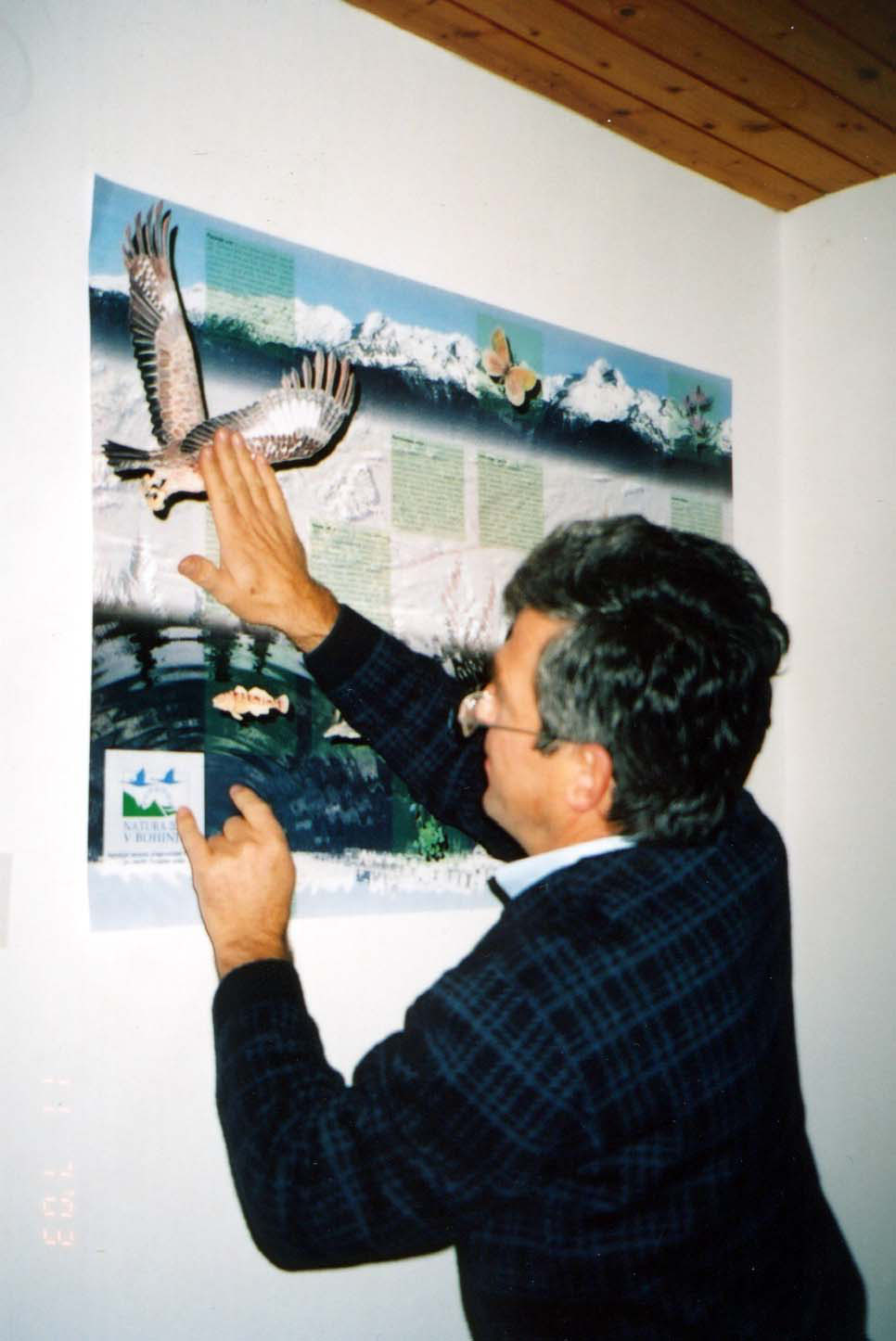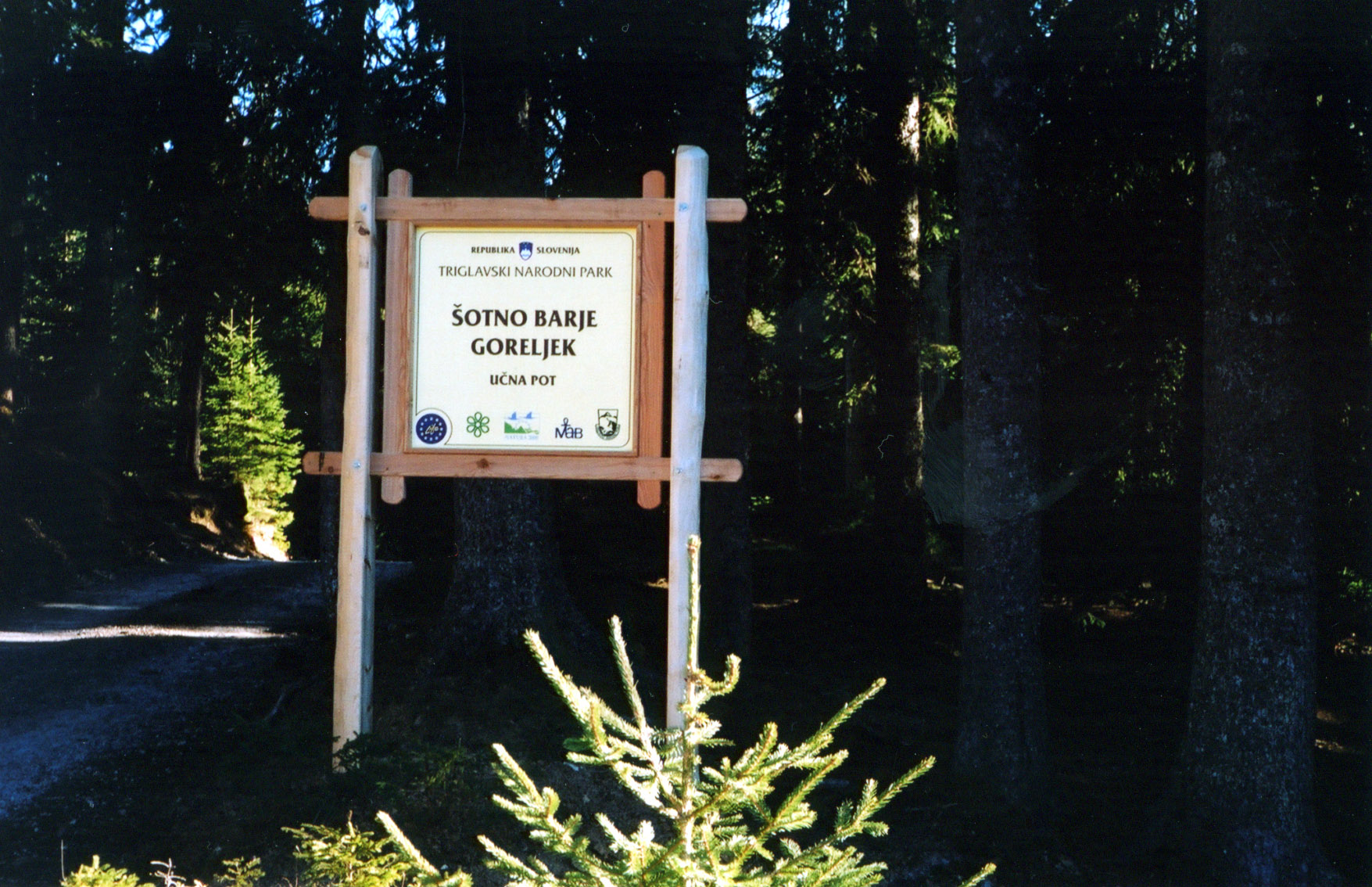

Slovenia: Triglav National Park
| Site fact file |
| Natura 2000 Ambassador for the Natura Network Initiative... | Representative of Tilos Park Association, NGO | ||
| Tanja Menegalija |
| Country | Slovenia |
| Natura 2000 site location | Gorenjska region |
| Nearest urban settlement | Kranj, Ljubljana |
| Natura 2000 site name | Triglav National Park |
| Natura 2000 site number | SI3000133, SI3000253, SI3000278, SI5000019 |
| Size of site (hectares) | 83,807 ha |
| Site description / classification | The Triglav National Park (in Slovenian: Triglavski Narodni Park) is situated in the most northwestern part of Slovenia. The TNP covers Slovenia's part of the Julian Alps. The TNP is named after Slovenia's highest mountain: the Triglav (2864 m), which means the Threehead. Triglav National Park is situated close to the junction of the three borders of Austria, Italy, and Slovenia and contains the most characteristic landscape elements typical of Slovenia. In addition to the alpine valleys, mountain ridges, and peaks of the Julian Alps, other distinctive natural assets in the park include high mountain lakes, Lake Bohinj, waterfalls, gorges, troughs, and high mountain karst phenomena.There's also a rich and varied plant and animal world, with its numerous endemic species deserves special attention as it reflects the interwoven contrasts between the cold alpine north and the gentle Mediterranean south. All this beauty is cherished by the local people, who have a rich historical and cultural tradition. |
| Key Species types | Mannia triandra, Erebia calcaria), Osmoderma eremita*, Rosalia alpina*, Eudontomyzon spp., Salmo marmoratus, Maculinea teleius, Lutra lutra, Moehringia villosa, Dicranum viride, Buxbaumia viridis, Aquilegia bertolonii, Eryngium alpinum, Cypripedium calceolus, Campanula zoysii, Cottus gobio, Drepanocladus vernicosus, Aquila chrysaetos, Gyps fulvus, Lagopus mutus helveticus, Tetrao tetrix, Tetrao urogallus , Alectoris graeca saxatilis, Aegolius funereus, Ficedula parva, Pernis apivorus, Circaetus gallicus, Falco peregrinus, Bonasa bonasia, Crex crex, Glaucidium passerinum), Strix uralensis), Alcedo atthis, Picus canus, Dryocopus martius, Picoides tridactylus, Dendrocopos leucotos, Lullula arborea, Ficedula albicollis, Lanius collurio, Monticola saxatilis, |
| Key Habitat types | (3140) hard oligo-mesotrophic waters with bentic vegetation (Chara spp.), (6430) Eutrophic tall herbs, (9530*) Mediterranean pine forests with endemic black pines, (6520) Mountain hay meadows, (7140) Transition mires (8120) Calcareous screes of the montane to alpine levels (Thlaspietea rotundifolii), (8130) Western Mediterranean and alpine thermophilus scree, (8160*) Medio-European calcareous scree, (8210) Chasmophytic vegetation of calcareous rocky slopes, (8220) Chasmophytic vegetation of siliceous rocky slopes,, (8240*) Limestone pavements, (8310) Caves not open to the public, (7230) Alkaline fens, (7140) Transition mires, (7110*) Active raised bogs |
| Key management issues | The manegement plan for the entire area of the Park is under construction. The main issue is to collect data about species and habitat types, to collaborate with local authorities, inhabitants and other stakeholders, educate and develop nature friendly tourism. Some actions were done in Life project in the area of peatbogs in Pokljuka ((7230) Alkaline fens, (7140) Transition mires, (7110*) Active raised bogs). Management plan for the area, redirection of the people from the most sensitive areas and promotion of Natura 2000 (http://life.tnp.si/). |
| Natura Network Agreements |
| Organising at least one Green Days event per year | Two events organized in 2006 ( Belar´days for children in Trenta valey and Friday afternoon in Park for families). |
| Promoting Natura 2000 at the local level | Nature 2000 promotion for children, meetings with local stakeholders and municipality authorities. Booklets (http://www.tnp.si/natura2000/bohinj/n2000bohinj_z.pdf), posters (http://www.tnp.si/natura2000/bohinj/n2000bohinj_p.pdf) and presentations for owners |
| Involving local stakeholders in the management planning process - creating a local area partnership | We will prepare the sectoral management plans and involve stakeholders and others, like Institution of Nature Protection, Institution of Forestry, Institution of Agriculture, Water management etc. in order to make the necessary corrections, additions, adjustments.... After that, now even more complete draft, it will be open to the general public - to be more precise - to the community councils. If aproved, it will be presented to the Ministry of Environment and to the Government to be adopted and later also to be proclaimed. Only then it will became a strategic document with full validity. But not to forget; it can't be proclaimed untill all the local communities don't agree with the designated regimes. |
| Involved in European networking / Twinned with other site for knowledge exchange | Yes. We cooperate with Prealpi Giulie Nature Park (Italy). Exchange of information of Natura sites, GIS methods, communication with local people. We have also common publicitation (http://www.parcoprealpigiulie.org/notiziario/PalpisjuNews.pdf). The result of this project will be management plan for Natura 2000 sites in the nearby Italian- Slovene border. |
| Branding Natura 2000 | Yes. The education trail around peatbog in Pokljuka (SI3000278) have signs and also some information about Natura 2000. |
| Agreeing to become an NNi ambassador | Tanja Menegalija tanja.menegalija(at)tnp.gov.si is an NNi Ambassador. |
| Site photos |
 |
 |
||||||||
| Site contact | Tanja Menegalija tanja.menegalija(at)tnp.gov.si |
| Web site | http://www.tnp.si |